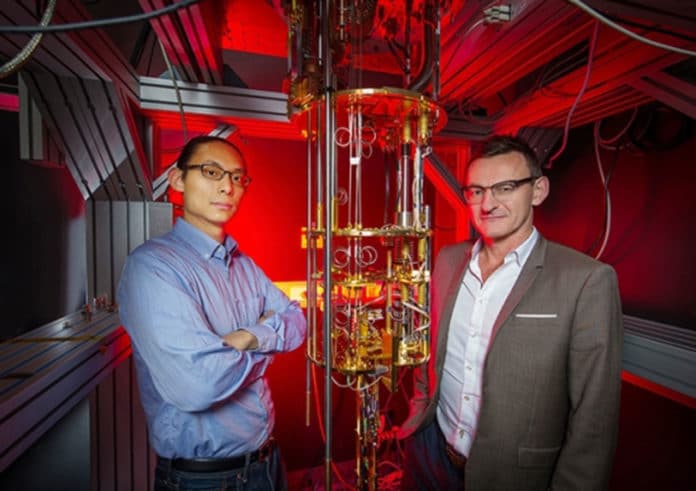Most quantum computers require multi-million-dollar refrigeration to work at fractions of a degree above absolute zero. But, they start overheating once plugged into conventional electronic circuits.
Scientists at the UNSW Sydney have addressed this problem. They have come up with proof of concept that opens a path from experimental devices to affordable quantum computers for real-world business and government applications.
Scientists have developed a quantum processor unit cell on a silicon chip that works at 1.5 Kelvin.
They achieved this by isolating the quantum dots from the electron reservoir and then initializing and reading the qubits solely via tunneling of electrons between the two quantum dots.
The cell composed of two qubits bound in a couple of quantum dots embedded in silicon. The outcome, scaled up, can be made utilizing existing silicon chip processing plants and would work without the requirement for multi-million-dollar cooling. It would likewise be simpler to incorporate with traditional silicon chips, which will be expected to control the quantum processor.
Professor Andrew Dzurak at UNSW said, “Quantum computers are expected to outperform conventional ones for a range of important problems, from precision drug-making to search algorithms. Designing one that can be manufactured and operated in a real-world setting, however, represents a major technical challenge.”
“Every qubit pair added to the system increases the total heat generated, and added heat leads to errors. That’s primarily why current designs need to be kept so close to absolute zero.”
“The prospect of maintaining quantum computers with enough qubits to be useful at temperatures much colder than deep space is daunting, expensive, and pushes refrigeration technology to the limit.”
The UNSW team, however, has created an elegant solution to the problem, by initializing and “reading” the qubit pairs using electrons tunneling between the two quantum dots.
Scientists first announced their experimental results via the academic pre-print archive in February last year. Then, in October 2019, a group in the Netherlands led by a former post-doctoral researcher in Dzurak’s group, Menno Veldhorst, announced a similar result using the same silicon technology developed at UNSW in 2014. The confirmation of this ‘hot qubit’ behavior by two groups on opposite sides of the world has led to the two papers being published ‘back-to-back’ in the same issue of Nature.
Journal Reference:
- Operation of a silicon quantum processor unit cell above one kelvin. DOI: 10.1038/s41586-020-2171-6
